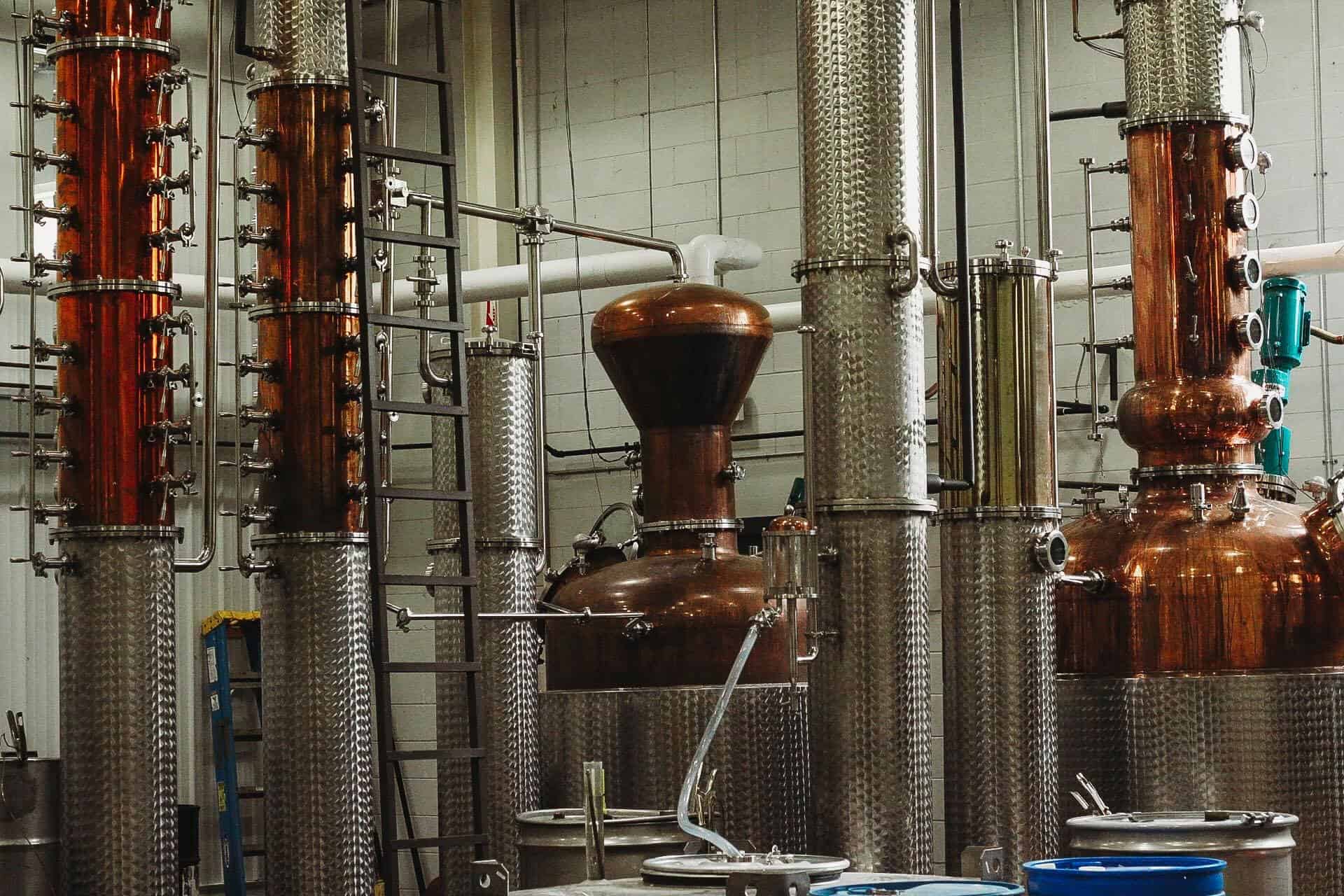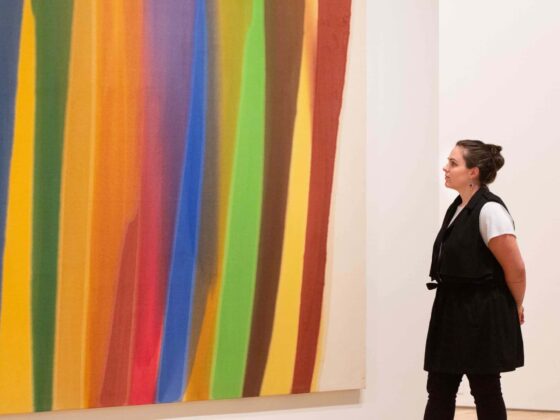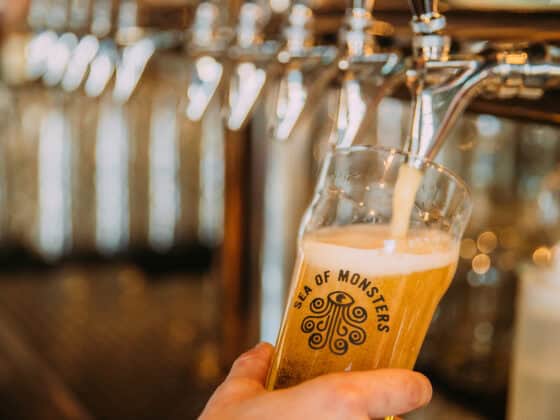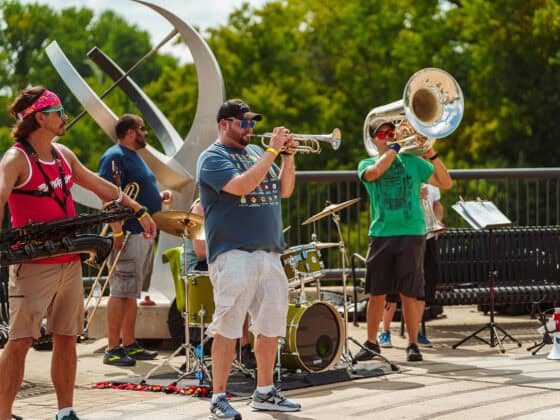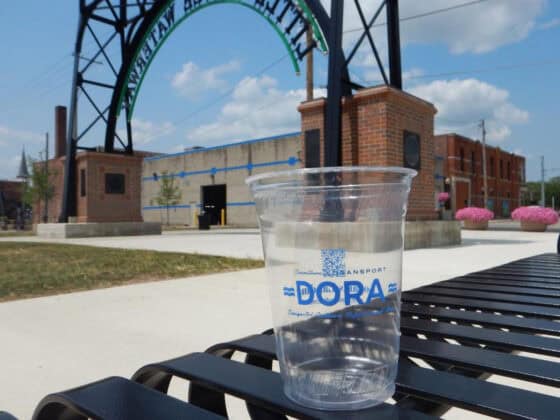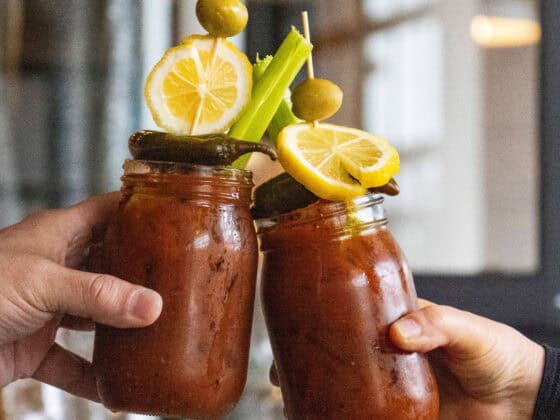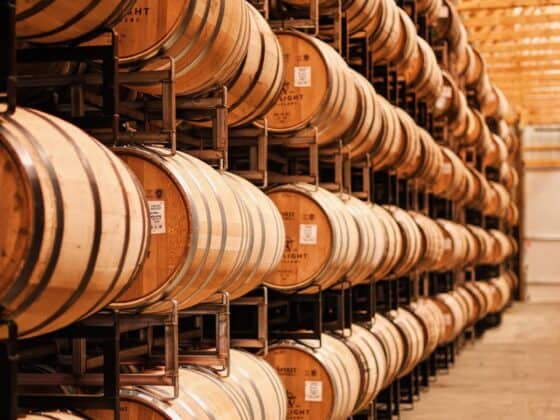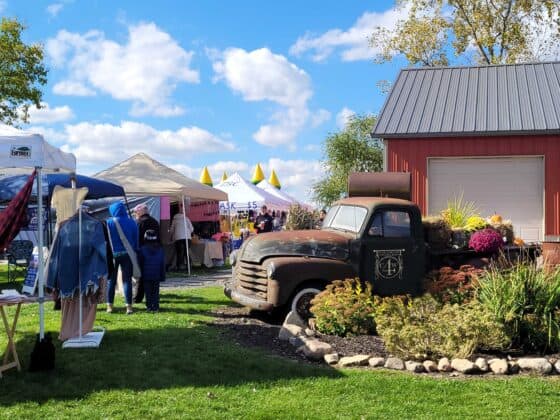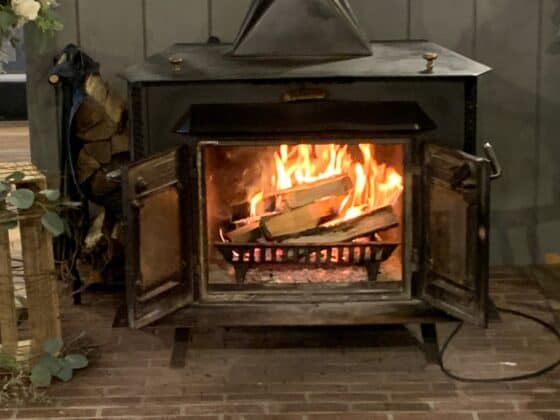Spirits of French Lick Distillery
by Elizabeth Granger
This is a tale of a forest that really wasn’t, distilleries that aren’t, and a master storyteller disguised as a distiller. All in all, a captivating history as American as apple … ah, brandy.
This is about the Spirits of French Lick, a relatively new distillery that grew out of the success of the French Lick Winery (which is actually in West Baden Springs). It was born just four years ago. Officially, at least. But this narrative is more than 200 years in the making, if you limit it to America. And Alan Bishop–the distillery’s master distiller and well-known Hoosier historian–knows the score. It’s part of his DNA.
Bishop was/is/always will be a Hoosier from southern Indiana. “Notice how people from here never say they’re from Indiana?” he asks. “It’s always southern Indiana.” Said with pride.
And this particular tale is all about liquor.

PHOTO: Lindsey Skeen
“My family has been involved in distilling, both legally and illegally, in both Indiana and Kentucky,” Bishop says. “The still was just another farm tool. When I was 15, my dad and grandfather gave me a 10-gallon still, but they did not teach me how to make liquor.”
That was on the family’s tobacco farm. Bishop, an enterprising soul even then, turned part of it into an organic produce farm. “Nobody cared,” he confesses. “I was trying to sell produce in a place where everyone grew their own.”
But the endeavor got him into grain breeding and fruit trees. Remember: A distillery is an agricultural business.
Fast forward a couple decades. Bishop was working at a distillery in Kentucky when the call came. The call that just about everyone hopes for. Out of the blue, folks in West Baden Springs – on the right side of the river, Bishop says – wanted him to help them add a distillery to their winery.
They’ve started small and have no intention of copying the big guys. “We understand the market,” Bishop says. “If we were doing what the big distillers are doing, we won’t make it. So we have to differentiate what we’re doing.”
“We have to be different; we’re in bourbon’s back yard.”

So the Spirits of French Lick uses the process of double-pot-still distillation and is the largest pot-still distillery in the state. And it pays close attention to the ingredients. “Respect the grain,” the motto says.
“Grain has terroir, just like grapes do,” Bishop says. The wheat and corn are cultivated on their Hoosier Homestead-designated farm; other ingredients are sourced locally as much as possible. Bishop, ever the grain breeder, created a hybrid strain of heirloom corn used in the Spirits’ estate bourbon.
The distillery focuses on four products: bourbon, brandy, botanical spirits, and American whiskey.
Bishop says his favorite product to make is a botanical spirit. But he has two favorites to drink. One is a four-grain bourbon using corn, wheat, oats and caramel malt. “That was the first recipe I came up with at home and I took back to my dad and my grandpa, and that they liked,” he says.
His other favorite is the rest of this story.
“I grew up in a family that made a lot of apple brandy,” Bishop says. “I would rather have well-made apple brandy than anything else.”
It’s become Spirits’ signature drink. “Southern Indiana has a long and deep history of apple brandy production,” Bishop adds. “It’s a big deal.”
Seems the settlers who came to the area were from the Black Forest region of Germany, where brandy was popular. Especially apple brandy. So they planted apple trees in their new home. Lots and lots of apple trees. Historian Bishop says that by 1855, six southern Indiana counties – Washington, Lawrence, Crawford, Harrison, Perry, and Orange counties – each had more than 150,000 apple trees. They were grown specifically for apple mash brandy.

Apple Brandy Old Fashioned
PHOTO: Spirts of French Lick
The region became known as the Black Forest of Southern Indiana, although it was actually an apple orchard.
The area included more than a fair number of distilleries. Between 1855 and 1914, Bishop says, at least 155 documented legal distilleries (although not all at one time) were making apple brandy in the six southern Indiana counties. They were producing more apple brandy than anywhere else in the world. That brandy was considered the highest quality apple brandy anywhere.
And then came excise taxes, and a blight, and temperance, and Prohibition. Most distilleries were forced out of business. And because laws mandated the destruction of not only equipment but also crops that went to making alcohol, the apple orchards were burned.
Enter Bishop. “Apple brandy runs pretty deep in my blood,” he says simply. So he’s making apple brandy. His award-winning Old Clifty Hoosier apple brandy is available to purchase at Spirits of French Lick Distillery. It’s also distributed throughout Indiana, Kentucky, and Missouri. It’s made from Michigan apples, but the plan is to increase the number of apple trees in Indiana – Bishop’s been busy planting them already – until apple brandy will again be from apple trees in the Hoosier state.
Other award-winning options include Lee W. Sinclair four-grain bourbon, rum, vodka, gin, aquavit and absinthe.
Says Bishop: “Our goal is that 10 years from now we’ll be the distillery other distillers want to go to.”
Spirits of French Lick
8145 W. Sinclair St.
West Baden Springs, IN 47469
(812) 936-2293
SpiritsOFrenchLick.com


